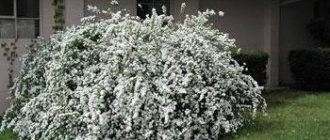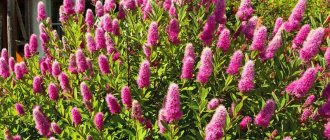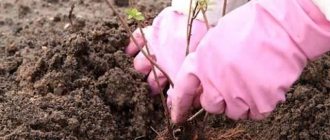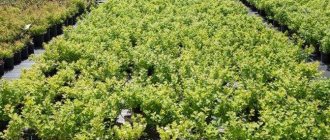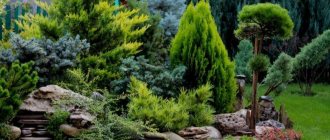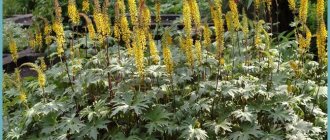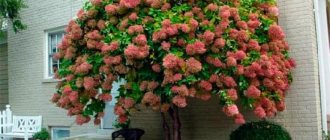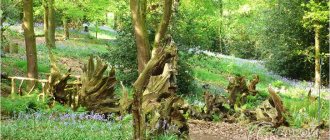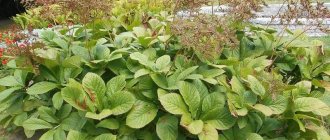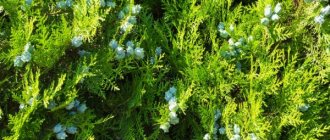Characteristics of Argut spirea
According to the description, Argut spirea is an ornamental shrub that belongs to the Rosaceae family. The hybrid was obtained based on the Thunberg spirea and a multi-flowered variety of the plant.
Spiraea of this variety is distinguished by lush flowering
The shoots of an adult crop reach a height of 2 m. The diameter of the branches can be 3 m. The leaves of the plant are narrow and have a lanceolate shape. Spiraea sharp-toothed at the end of May is covered with snow-white flowers; they appear on the shoots of the second year.
The buds reach 8 mm in diameter and include 5 petals. Each inflorescence contains many stamens. This makes the plant appear fluffy.
Attention! Spirea Arguta is characterized by rather slow growth. In 1 year, the shoots grow by 10-20 cm. Regardless of this, the crop must be pruned.
Spiraea of this variety is often used in landscape design. It is used for single plantings or forming hedges. Bushes are also found in large parks. They look especially impressive in combination with coniferous crops.
Diseases and pests
Spiraea arguta has good immunity against diseases and, in general, suffers more from pests - timely feeding, watering and spraying the bushes with water in dry summer time will prevent many diseases. So:
- Rose leaf roller
- appears when the average air temperature reaches 13 °C. The caterpillars gather several leaves into a tube and gnaw them out. Treatment: a mixture of 0.7% Bitoxibacillin with 0.03% Pirimor. - Aphids
- form entire colonies that suck the juices from the leaves, young shoots and peduncles of spirea. It is especially harmful from June to August. Treatment: at the beginning of the growing season in April, use granulated “Pyrimor” - 5% of the drug is applied to the soil to a depth of 2-5 cm, at the rate of 15 g/m2. - Rosaceae miner
- appears on the upper side of the leaves at the end of June until the second half of July. - Spider mites
- female mites overwinter under fallen leaves; in May they move to the underside of young leaves, weave webs and lay eggs. During the season, the spider mite produces 8-10 generations. There can be up to 300 individuals on one leaf. The affected leaves have whitish panicle-spots on the upper side. Leaves turn yellow prematurely, dry out and fall off. The main damage from ticks occurs in July - August, especially in dry summers. Treatment: to get rid of mites and miners, treat spirea with a 0.2% solution of Phosfamide, Acrex, Keltan or 0.3% solution of Karbofos.
Watch and care for your white bride, and she will delight you with her lush blooms every spring!
Planting a plant
Spirea Grefsheim - description, planting and care
The plant can be grown in different ways. The bush can be propagated by seed or using cuttings.
Spiraea propagates well from cuttings
Planting by seeds
This method of planting spirea is considered not very popular. It is usually used for propagation of crops in nurseries. Planting seeds is not difficult, but the resulting crop may not have the characteristics of the mother plant.
It is recommended to plant seeds in spring. In this case, the first shoots will appear only after 3-4 months. When several leaves form on the shoots, it is recommended to pick the seedlings and leave them in separate containers until autumn. Spiraea begins to bloom only after 3 years.
Important! When the first leaves appear, seedlings can be planted in open soil. However, in this case they will have to be covered with film and transplanted to a permanent site in the spring.
Planting seedlings
This is the simplest and most accessible method of growing a plant, which helps preserve the characteristics of the mother crop. It is recommended to take cuttings for growing seedlings in early June. Semi-woody shoots 1 year old are suitable for this. They must include a minimum of 5 leaves.
- Before planting, it is recommended to soak the cuttings in Kornevin’s solution for 12 hours.
- It can be placed in a pot with light soil or in prepared open soil.
- Then the seedling must be covered with film.
At the rooting stage, the culture needs careful care. The soil should not be too wet or dry. The plant must be systematically moistened and ventilated.
Important! It is worth keeping the culture in the shade. When young shoots appear in the spring, the bush should be transplanted into permanent soil.
Growing conditions and planting
Arguta is an undemanding plant, but in order for it to take root, you need to follow a number of care rules:
- It is necessary to plant by dividing a 3-4 year old plant, until the roots are too voluminous, away from groundwater, in an area open to sunlight, otherwise the flowering will not be powerful. It is better to do this in September in cloudy weather.
- Select fertile soil, but clay and loamy soil is also acceptable.
- To speed up the adaptation of the spirea, a composition of turf, peat, sand is placed in the planting hole, and a drainage layer is also made (for example, broken brick).
- The roots of the spirea dug out for planting are thoroughly washed with water, then using pruning shears they are divided into 3 separate parts so that each has 2-3 powerful stems. At the same time, the cord-like roots of the plant are trimmed.
- Then the spirea is lowered into the hole, covered with soil, lightly compacted, and watered in several stages.
In case of soil subsidence, the spirea is additionally sprinkled with earth, and after half an hour it is watered with liquid humic fertilizer. As further care, you need to follow the rules of watering the plant, pruning and preventing pest control.
Watering and loosening the soil
Spiraea Wangutta - botanical description and varieties
After planting the crop, it needs regular watering. However, you should not moisten the soil too much. When weeds appear, they must be removed promptly. Otherwise, there is a risk of developing diseases and parasite attacks.
It is enough to water adult bushes once a week. 1 plant requires 1.5 buckets of water. After watering, the soil should be carefully loosened to provide the roots with oxygen. It is also recommended to cover the bed with a mulch layer.
The plant needs to be watered regularly
Varieties and types
To date, more than 90 species of spirea are known. Let's look at the most popular of them:
- Spiraea Gray. The height of the bush is 2 m. The color of the flowers is white;
- Spiraea Arguta;
Spiraea Arguta, or sharp-toothed, has fairly small snow-white flowers, up to 0.8 cm in diameter, with long staminate filaments that create a “fluffy” effect. The leaves are deep green in color. The height of the bush can be from 1.5 - 2 m. This plant is one of the most spectacular spring-flowering spireas. This variety of spiria begins to bloom in mid-May. The Arguta spirea bush is good for its hanging branches, which are covered with small flowers, and they are collected in dense baskets. Towards the end of spring, this variety is covered with many inflorescences; under their weight, the branches take a drooping shape. It grows quite slowly, 20 cm per year.
- Spiraea Vangutta. Height is about 2 m. Flower color is white. Leaf color is blue-green;
- Spiraea crenate. Height no more than 1 m. Leaves are greenish-gray. The flowers are white-yellow;
- Spiraea oak leaf. A small shrub, about 2 m in height. The flowers are snow-white;
- Spiraea Medium. The height of this shrub varies from 1-2 m;
- Japanese Spiraea - 1.5 m in height. The leaves are green on top and have a bluish tint underneath. Pink flowers;
- Spiraea birch leaf. The foliage of this plant is somewhat similar to the leaves of birch. Its height is about 60 cm. The flowers are white and pinkish, the inflorescences have a pineal shape.
Reproduction methods
Billard's spirea - description, planting and care
Over time, the culture begins to age. In such a situation, new seedlings are required. To propagate the crop, cuttings or layering can be used.
Important! The plant cannot be propagated by seed. This is due to the fact that this variety is a hybrid.
To carry out cuttings, planting material should be prepared in the summer. In this case, it is necessary to tear off the leaves at the bottom and carefully scratch the stem with pruning shears. This will help stimulate root emergence.
They should be buried at an angle into the ground and covered with earth. Plantings need to be well watered and covered with a jar. Next year, the seedlings can be moved to a permanent location.
To propagate the crop by layering, the young shoots of the bush should be bent and attached to the ground. Sprinkle soil on top. During the summer, the plant needs systematic watering. The cuttings will produce roots next spring. At this stage, they can be planted in a permanent plot.
Transplanting a plant
It is advisable to move the plant to a new location in spring or autumn. A sunny area with no draft is suitable for the culture. It is important to avoid low or wet areas.
Spiraea requires fertile soil; it must be acidic or slightly alkaline. Seedlings without noticeable defects are allowed to be replanted. In this case, it is recommended to treat the bush with fungicides.
To carry out a transplant you should do the following:
- place a drainage layer in the recess;
- fill the substrate;
- straighten the roots and place the plant in the hole;
- Cover the hole with soil and compact it.
Important! It is recommended to do the deepening in advance. This will allow the soil to settle and become evenly moistened.
How to plant?
Planting of argut spirea occurs either in the spring after the end of frosts, or in the fall, respectively, before the start of frosts. Ideally, the procedure should take place on a cloudy day with relatively low temperatures. Container plants cannot be planted at any time. Although spirea can grow on any surface, experts recommend adding turf or leaf soil, as well as sand and peat, to the hole. The place should be shady.
Planting material must be of high quality, grown independently or purchased from a trusted nursery. The use of both seedlings with open and closed root systems is not prohibited. In the case when the seedling is removed from the container, it must be thoroughly watered in order to be removed directly with a lump of earth.
Saplings with an open root system are prepared in a slightly different way. 24 hours before the planned planting, soak in a manganese solution or a root stimulator. If necessary, the roots are shortened with a disinfected and sharpened knife to a length of 20 to 25 centimeters. The cut must be even. The shoots are shortened so that only 4 to 5 buds remain along the entire length.
The area where Argut spirea will be planted is dug up, weeded and cleared of the remains of other plants, as well as weeds. The hole is created in such a way that its dimensions are a couple of times larger than the dimensions of the root system. If shrubs are planted separately, then a gap of one to a couple of meters should be maintained between them. When creating a hedge, the distance between seedlings is 70-80 centimeters.
The bottom is covered with a layer of drainage, the thickness of which ranges from 10 to 15 centimeters. Suitable materials for this purpose include large pebbles or pieces of brick. The remaining part of the hole is filled with fertile but loose soil mixture, which is immediately watered until the water goes to depth.
A small hill is built in the central part, on which a spirea seedling is placed. The roots are straightened and covered with soil so as not to cover the root collar. Arguta is irrigated, but it is important to ensure that the water does not drag the seedling down. The root area is immediately mulched using peat or humus.
Pruning Argut spirea
The next year, after planting, systematic pruning is carried out. During the sanitary procedure, it is necessary to remove affected and dry branches. The formation of the bush should be done in spring or autumn - this will help to get a beautiful crown.
At 3 years old it is recommended to carry out stimulating pruning. It is aimed at removing weakened and unnecessary branches.
Attention! At 15 years old, spirea needs a rejuvenating procedure - it consists of removing all old branches.
The crop needs to be pruned in a timely manner
Care
Spiraea Gray or Ash does not need any special care, being content with the usual procedures:
- Watering . Rare but plentiful. It becomes more frequent in dry weather. After watering, the soil around the bush needs to be mulched;
- Weeding and loosening . These simple manipulations saturate the soil with oxygen and relieve the bush from the negative effects of weeds;
- Feeding and fertilizer . You need to feed after pruning in the spring and shortly before it blooms. If it is impossible to obtain organic matter, Kemir-universal is considered the best remedy.
The only weakness of this shrub is the fear of sudden changes in temperature, so it is better to cover it for the winter, although this is not a necessary condition.
Plant pruning
Pruning is considered one of the main elements of shrub care. Cutting it is not difficult, so even an inexperienced gardener will be able to give the bush a certain shape .
Spiraea Gray is rejuvenated once a year by carefully cutting off dried branches
Gray spirea is pruned after it blooms - in July, once every two years. Adult plants are shortened, leaving shoots 30 centimeters high, young plants are pruned to strong buds . To form a new bush, it is enough to leave about five good branches, but others can be removed. Sanitary pruning of bushes is allowed during the entire growing season.
Trimming shrubs encourages more abundant flowering in the future.
To form a new bush, all but five or six branches are removed during the first growing season. Renewal of the bush is carried out once every 7 years.
Place for spirea
An attractive spirea should not be hidden in the depths of the site, because it always pleases the eye and evokes positive emotions. When planting this beauty in plain sight, you only need to take care of its sufficient lighting . The best solution would be to plant shrubs along the fence.
Preparing for winter
Adult plants do not need to be covered. The shoots are highly resistant to frost and can withstand temperatures down to -40 degrees.
In this case, the root system is located near the very surface of the soil and needs protection. To do this, it is recommended to place compost or humus under the bushes in the fall. Its layer should be 30 cm.
Young plants up to 4 years old need to be prepared for winter. To do this, it is recommended to sprinkle the root zone with mulch. The branches must be compressed and secured with rope. Insulate the shoots from above with burlap or non-woven material.
Possible difficulties during cultivation
There are no difficulties when growing spirea, but there are some care nuances that are worth knowing:
- Arguta planted in the fall may die in the first winter, since the young shrub is not strong enough, unlike adult meadowsweet, and it needs to be created with comfortable conditions.
- You cannot prune faded branches; this will provoke the growth of side shoots and spoil the overall appearance.
There will be no problems with spirea in other matters.
Use in landscape design
Spiraea can be used to create hedges or species compositions. It is permissible to do group plantings. To decorate them, different varieties of spirea are used - for example, gray. The culture looks great with coniferous and deciduous plants. Spiraea is also suitable for arranging bouquets.
Culture is often used to design compositions
Spirea Arguta is very popular among gardeners. To get a powerful plant, you must strictly follow the recommendations of experienced gardeners and provide the plant with quality care.
